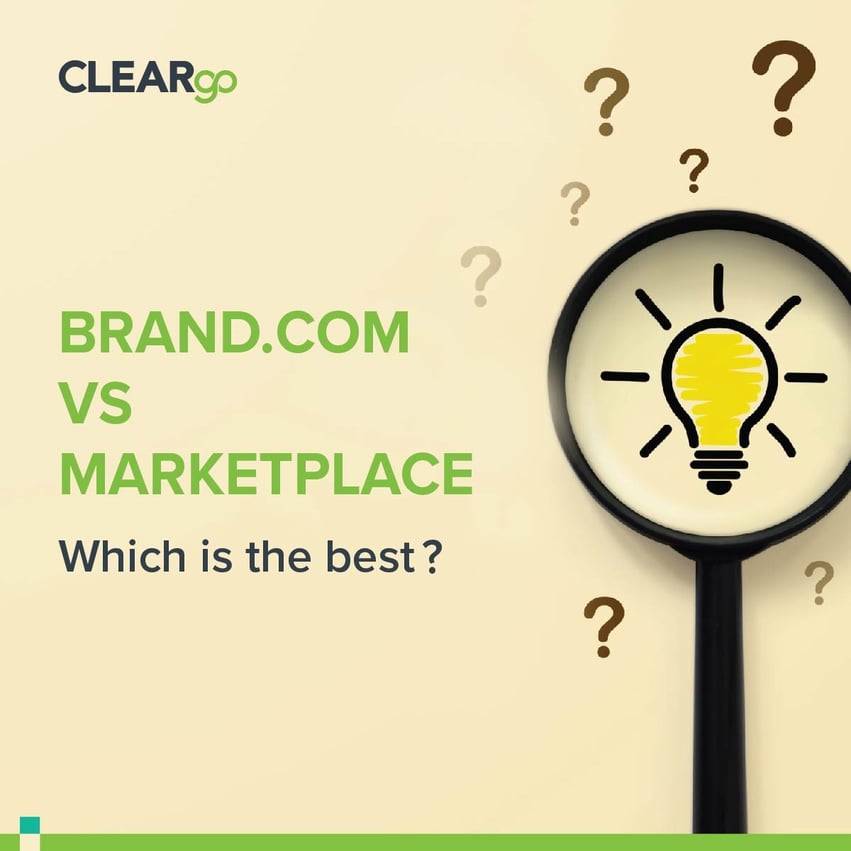
Brand vs Marketplace
Brand.com and Marketplace – Which is the best?
Often we heard people comparing both brand.com and marketplace when businesses want to kickstart their digital commerce or choose which platform to focus on. These 2 platforms have their own unique propositions which require different strategies to optimize the platform performance. Get insight from this article to understand how to strategically leverage these platforms.
There are only two parties involved on brand.com, the buyer and the business owner. The business needs to build the website from scratch and put efforts into publicizing and maintaining it. Whereas, marketplace is an online shopping platform that has multiple merchants, customers and the marketplace administrative. Examples of the marketplace are Tmall, JD.com, Lazada, Zalora, or Shopee.
Differences between Brand.com and Marketplace
Brand.com
Brand.com is in a strong position in SEA as shoppers are adapting to the online shopping journey ever since the pandemic outbreak. This continues even after the pandemic. According to the Google survey, 55% of shoppers have used brand.com throughout the path to purchase journey. This is a clear indication of the brand website role in the consumer purchase journey.
The purchase journey simply starts with awareness and here is where brand.com must exist as a touchpoint when the shoppers are searching options for a category. And it is your brand. A brand is the core promise that a company makes its customers. Without branding, people may not trust a company or understand why they should buy its goods or services.
Branding is the feeling that a business elicits in its customers. A business own online store can deliver credibility, trust and authenticity. Shoppers prefer to buy higher costs items on brand.com because they feel more assured about the product authenticity and they can go back to the brand directly in case of any issues. The Ecommerce website usually has a ready communication platform such as chatbots, live chat and other direct-communication channels to assist the customers which grants a better experience.
This is because brand.com can provide a complete and personalized purchase journey as the business is taking control of the site even though it takes a longer time and higher cost to build. Business has full control of its brand, marketing campaigns, pricing, margin and discounts. With personalization, they can target customers based on their demographic, browsing behaviour and purchasing behaviour.
However, brand.com will have a lower conversion rate from price-sensitive shoppers as the item price is relatively higher compared to the marketplace. Although brand.com cannot provide a competitive pricing strategy, businesses can give more purchase value to the shoppers. Starting from intangible seamless shopping experience to itemized premium. Shoppers can receive exclusive deals or additional services from the site. For example, extended warranty and able to return within 14 days.
Marketplace
Marketplace is a powerful platform that delivers a convenient shopping experience. Users can easily search the categories, compare the products and checkout. The user interface for search and evaluation is easy and suitable for people of all ages. With the integration of social media, their advertisements are easily available on social media. Users can click on the product on social media then it will redirect them to the app checkout page within a second.
As a start-up, an established online marketplace can really make wonders as there are millions of ready customers using the platform. This is different from brand.com which you need to start from zero users interacting with your website. For example, Lazada has more than 50 million active users. They might not be all searching for your product, but a portion is searching for your categories. Your product will be showing up together with the competitors during their searching stage.
This will directly affect your speed to market not only due to the mature user reach but also the setup cost and time needed. The cost and time needed to develop an online marketplace as a sales platform are relatively lower than building an E-commerce website. It is a ready application that you just need to register an account and upload your products. You probably need just a few days to place the products in front of your customers. And it operates 24 hours.
In spite of that, businesses need to know that most online marketplace either charge for product listings or commissions for each transaction or even both. The profit margin will be affected and the competition is fierce with different product listings. On top of that, people who bought your products on the marketplace may not remember your business brand due to the user interface and user behaviour. Users tend to search for categories rather than brand name. Then they choose from the product listings from various sellers.
Conclusion
Despite the significant differences stated above, brand.com and marketplace can actually co-exist in the online retail ecosystem. They both have unique offerings and advantages to tap on. In fact, in an omnichannel setting, brands should leverage both brand.com and the online marketplace to capture customers across their purchase journey. They can reach out to different market segments through various channels.
To start with which one? It will depend on individual business strategy and direction itself. Building an online store might take a long process from choosing the right partner, setting up payment solutions, organizing operations, customer service, supporting marketing programs and fulfilment partnerships. In return, it definitely delivers better long-term benefits and value.
For established multi-brand retailers with a ready commerce site, you can always convert your brand.com from B2C into a B2B2C model as an online marketplace, making your site a vertical destination for your categories.
